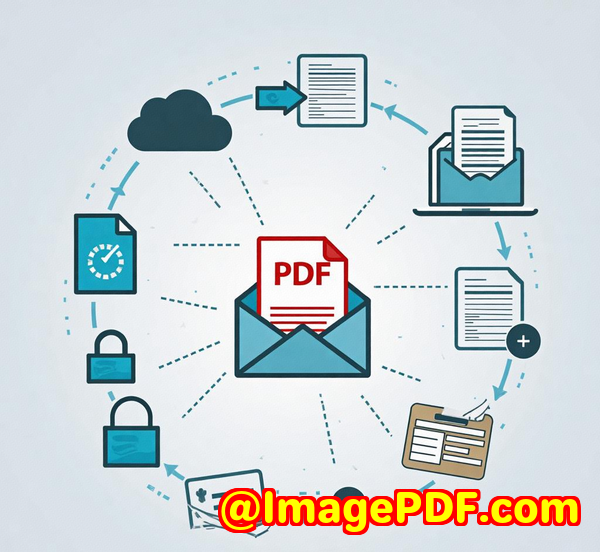How to Analyze Print Properties in PCL Files for IT Infrastructure Optimization
How to Analyze Print Properties in PCL Files for IT Infrastructure Optimization
Every Monday morning, I used to stare down a stack of print spool files mostly PCL and PostScript wondering how on earth to get meaningful info from them without wasting hours. In IT departments, especially those managing large print fleets, understanding what's inside these spool files is critical. Are those print jobs duplex or simplex? Colour or black and white? How many copies are being printed? Getting answers fast can save time, money, and paper. But if you're stuck opening each file manually or guessing based on print logs, you know how frustrating that can be.
That's where VeryPDF SPLParser Command Line and SDK for Developers stepped in for me. It's a powerful tool designed specifically for parsing and analyzing print files like PCL, PS, PDF, and SPL. I want to share how this tool helped me dig deep into print job properties quickly and reliably turning a tedious chore into a streamlined process.

Why IT Pros Need to Analyze Print Properties in PCL Files
If you manage an IT infrastructure with shared printers, you're probably juggling a mountain of print jobs every day. The print spool files hold the secret sauce the detailed instructions sent from computers to printers. But without the right tools, the data inside is like a locked vault.
Here are some common challenges I faced:
-
Unclear print job details: Sometimes, the print logs just show "Print Job #12345" without telling you if it's duplex, colour, or how many copies.
-
Inability to audit print usage: Without exact info, how do you accurately chargeback departments or track paper use?
-
Trouble optimizing print workflows: You want to tweak settings to reduce waste or speed up jobs, but you can't if you don't know the current properties.
-
Difficulties modifying print jobs on the fly: Changing duplex or copies requires special tools, or worse, manual reprints.
So, having a reliable way to extract and update print properties inside PCL and PS files is a game-changer.
Discovering VeryPDF SPLParser: A Real Solution
One day, after digging around for command-line tools that could handle PCL and PostScript parsing, I stumbled upon VeryPDF SPLParser Command Line and SDK.
What hooked me was its ability to:
-
Parse multiple file formats: PDF, PS, PCL, and SPL.
-
Extract detailed print job info from document titles to print properties.
-
Convert pages to images for quick previews.
-
Update key print properties like duplex mode, copies, and resolution in PCL and PS spool files.
This wasn't just another PDF converter or a simple viewer. This was a dev-friendly, command-line powerhouse designed to get under the hood of print jobs.
Key Features That Make SPLParser Stand Out
Let me walk you through the features I found most valuable, backed with examples from my own experience.
1. Extract Document Title and Print Properties
By running a simple command like:
I could instantly see crucial details, such as:
-
Document title (e.g., 'Visio-infraskope topoloji.vsdx')
-
Number of copies requested
-
Duplex mode (simplex or duplex)
-
Collation settings
This helped me understand what each print job was about without opening huge files or guessing.
2. Page-by-Page Colour Analysis
Some jobs were in colour, others black and white. Instead of manually opening files or asking users, I used SPLParser's page-level colour detection:
Output looked like this:
This info helped us identify large colour print jobs quickly essential for cost controls in IT.
3. Convert Specific Pages to Images for Preview
Sometimes, I needed a quick glance at a document's content before approving or auditing. SPLParser lets you convert just the first page to PNG for a fast preview:
This feature saved me hours because I didn't have to open full documents or request the original files from users.
4. Update Print Properties Inside PCL and PS Files
This blew my mind. Suppose a user accidentally sent a simplex job but we wanted it duplex to save paper. SPLParser lets you update spool file properties without reprinting:
After this, the new PCL file is set to duplex mode, with two copies at high resolution all without touching the original application.
This is especially useful in print farms or managed print services environments where reprints waste time and resources.
Why I Chose SPLParser Over Other Tools
Before SPLParser, I tried a few PDF and PCL viewers and converters most were clunky or limited:
-
Many tools handled PDFs fine but struggled with PCL or PostScript.
-
Some GUI apps didn't support batch processing or command line, making automation impossible.
-
Updating print properties inside spool files was either unsupported or required complex scripts.
-
Preview generation was slow or low-quality.
SPLParser stood out for its:
-
Versatility: Supporting PDF, PS, PCL, and SPL files all in one tool.
-
Automation readiness: Command-line options enabled batch processing, perfect for integrating into existing workflows.
-
Print property update capability: This is rare, and hugely valuable.
-
Reliability: Output and parsing were consistent and accurate.
It became my go-to tool for managing and optimizing print infrastructure.
Use Cases That SPLParser Solves Like a Pro
-
Enterprise IT departments managing large fleets of printers can audit and analyse print jobs easily.
-
Managed print service providers can quickly modify print job properties on behalf of clients, reducing waste.
-
Developers and software integrators can embed SPLParser into custom solutions using the SDK.
-
Cost control teams can identify heavy colour printing and optimise usage.
-
Audit teams can generate detailed reports on print job properties and document metadata.
Wrapping It Up: Why SPLParser is a Must-Have
Managing print spool files used to feel like black magic buried in complex formats and with no easy way to extract meaningful data.
VeryPDF SPLParser Command Line and SDK for Developers changed the game for me.
It's a no-nonsense tool that parses, previews, analyses, and even updates PCL and PostScript files, right from the command line.
If you're an IT pro looking to optimise print infrastructure, reduce waste, or automate print job management, I'd recommend giving SPLParser a try.
Start your free trial now and boost your productivity: https://www.verypdf.com/
Custom Development Services by VeryPDF
VeryPDF understands that no two IT environments are the same. That's why they offer comprehensive custom development services tailored to your specific technical needs.
Whether you need:
-
Custom PDF and PCL processing utilities for Linux, macOS, Windows, or servers.
-
Development in Python, PHP, C/C++, Windows API, JavaScript, .NET, iOS, Android, or HTML5.
-
Windows Virtual Printer Drivers to capture and convert print jobs into formats like PDF, EMF, TIFF, PCL, PostScript, or JPG.
-
Monitoring and interception solutions for Windows API and print workflows.
-
Barcode recognition and generation, OCR, layout analysis, or table extraction from scanned TIFF or PDF files.
-
Cloud-based document conversion, viewing, digital signatures, or DRM protection solutions.
VeryPDF has the expertise and experience to help you build powerful, customised print and document processing solutions.
Got a specific challenge? Reach out to their support team to discuss your project: https://support.verypdf.com/
Frequently Asked Questions
Q1: Can SPLParser handle both PCL5 and PCL-XL files?
Yes, SPLParser supports multiple PCL formats including PCL5 and PCL-XL, as well as PostScript and PDF files.
Q2: Is it possible to change the colour mode (colour to mono) in PCL files using SPLParser?
No, the colour or monochrome setting is embedded in the print driver's spool file and cannot be changed through SPLParser.
Q3: Can SPLParser be integrated into automated workflows?
Absolutely. Its command-line interface and SDK support make it ideal for batch processing and integration into custom systems.
Q4: Does SPLParser allow previewing specific pages as images?
Yes, you can convert specific pages, such as the first page, into PNG images for quick previews.
Q5: Is SPLParser suitable for developers who want to build print file analysis tools?
Definitely. SPLParser offers SDK options for developers to embed its functionality into their own applications.
Tags / Keywords
-
Print properties analysis in PCL files
-
PCL file parsing tool
-
VeryPDF SPLParser review
-
Print spool file optimisation
-
Command line print job analysis
-
Duplex printing update PCL
-
Print job metadata extraction
-
IT print infrastructure tools
-
Batch processing PCL and PS
-
Print job colour analysis



